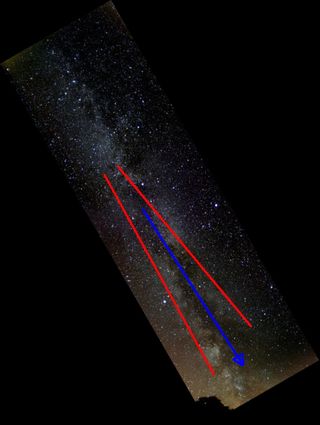by Pat Browne
During the summer and early fall months, using just binoculars, we can see that the Milky Way is not a river of light pollution or a hazy cloud, but MILLIONS of Stars.
If sky is
- dark enough after twilight has ended
- a bright Moon is not interfering
- you are in a dark sky location (like the Mill of Kintail)…
The planisphere below shows the location of the boundary of the Milky Way in July, August, and September at an increasingly earlier hour for observing. Binoculars or a telescope show us the innumerable stars in our galaxy. The constellations Cygnus and Sagittarius contain many star clouds, or Open Clusters embedded in the Milky Way.
The Star Clouds to the South:
Toward the southern horizon, you will notice that the Milky Way becomes more dense and defined in certain spots. Here, there are millions of stars in the central region of our galaxy. The great rift divides it with obscuring dust and gas in a series of overlapping, non-luminous, molecular dust clouds.These dust clouds are physically located between the Solar System and the Sagittarius Arm of the Milky Way Galaxy at a distance of about 100 parsecs or about 300 light years from Earth. The clouds are estimated to contain about 1 million solar masses of plasma and dust. [courtesy http://en.wikipedia.org/wiki/Great_Rift_(astronomy)]
For understanding the topography of the arms, we can see here that the Sagittarius Arm and the Orion-Cygnus Arm are nestled close together. Hence in Summer, we are treated to the Sagittarius star clouds, and as Fall and Winter approach, we observe more of the stellar neighbourhood of the Orion-Cygnus arm.
[see Spiral Arms of the Milky Way]
Note: For more information (but NO substitute for the real thing !)
http://media.skysurvey.org/interactive360/index.html
Choose i for information and zoom in on the Constellation Sagittarius



